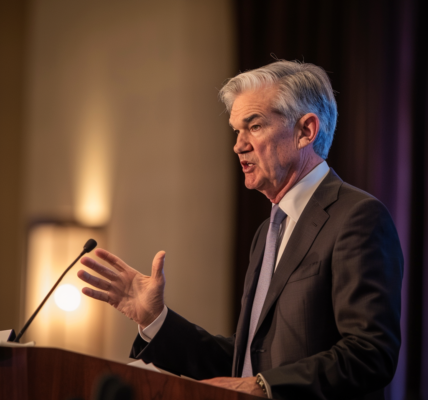As global markets brace for significant shifts, the spotlight is on the potential impact of interest rate cuts by the Federal Reserve on oil prices. The dynamics of commodity trading often reflect real-world events, with fluctuations in prices typically triggered by geopolitical developments or economic trends. However, recent statements from key financial authorities suggest that shifts in monetary policy may also play a crucial role in shaping market expectations.
On August 23, Jerome Powell, the Chair of the Federal Reserve, hinted at the possibility of lowering interest rates, a move that could signal the end of the current cycle of rate hikes that have pushed the Fed’s policy rate from near zero in 2022 to a range of 5.25% to 5.5% today. This anticipated shift has garnered attention from traders and political figures alike, as it could significantly influence commodity markets, particularly oil.
Historically, when interest rates are cut, the opportunity cost of holding non-yielding assets like commodities decreases. This scenario could lead to increased demand for oil, as investors seek to capitalize on lower borrowing costs and the potential for price appreciation. The relationship between interest rates and commodity prices is complex, often influenced by a myriad of factors including supply chain dynamics, geopolitical tensions, and global economic health.
China, as the world’s largest consumer of raw materials, plays a pivotal role in the commodity landscape. Economic fluctuations in China can have ripple effects across global markets, affecting demand for oil and other essential commodities. Additionally, geopolitical events, such as Russia’s invasion of Ukraine, have disrupted supply chains, leading to spikes in prices for fuels and grains. These developments underscore the interconnected nature of global commodity markets.
Traders are keenly aware of the implications of the Fed’s potential policy changes. A rate cut could stimulate investment in commodities, driving prices higher as market participants anticipate increased demand. However, this scenario is not without its challenges. The specter of inflation, along with concerns about economic slowdowns, could temper the enthusiasm surrounding commodity investments.
Moreover, the political landscape adds another layer of complexity to the situation. As incumbent politicians, including Vice President Kamala Harris, navigate the implications of rising oil prices on consumer sentiment and the economy, the stakes are high. The interplay between monetary policy, commodity prices, and political considerations creates a multifaceted environment that traders must navigate with caution.
As the Federal Reserve prepares for its upcoming rate-setting committee meeting on September 18, all eyes will be on the central bank’s decisions and their potential ramifications for oil prices. The anticipation surrounding these developments highlights the critical role that monetary policy plays in shaping market dynamics and influencing investor behavior.
In summary, the prospect of interest rate cuts by the Federal Reserve has sparked discussions about their potential impact on oil prices. While real-world events continue to drive commodity markets, the influence of monetary policy cannot be overlooked. As traders and policymakers alike await the outcome of the Fed’s decisions, the interconnectedness of global markets remains a key factor in understanding the future trajectory of oil prices and the broader economic landscape.





